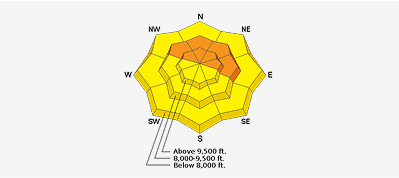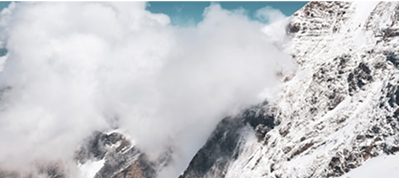Sastrugi: Wind erodes from the windward side of an obstacle and deposits on the lee side. We call the eroded snow sastrugi. You can recognize it by its rough, sand-blasted texture. We usually think of wind eroded snow as being stable because stress on buried weak layers has been decreased by wind eroding the overlying snow. Conversely, wind will deposit that same snow on to the lee slopes, which increases weight on buried weak layers. Sastrugi is not always stable snow. Remember you only see the surface texture. Perhaps the wind only eroded an insignificant amount of snow and a buried weak layer still lingers below just waiting for a trigger. As usual, all slopes are guilty until proven innocent by the usual battery of snow stability tests
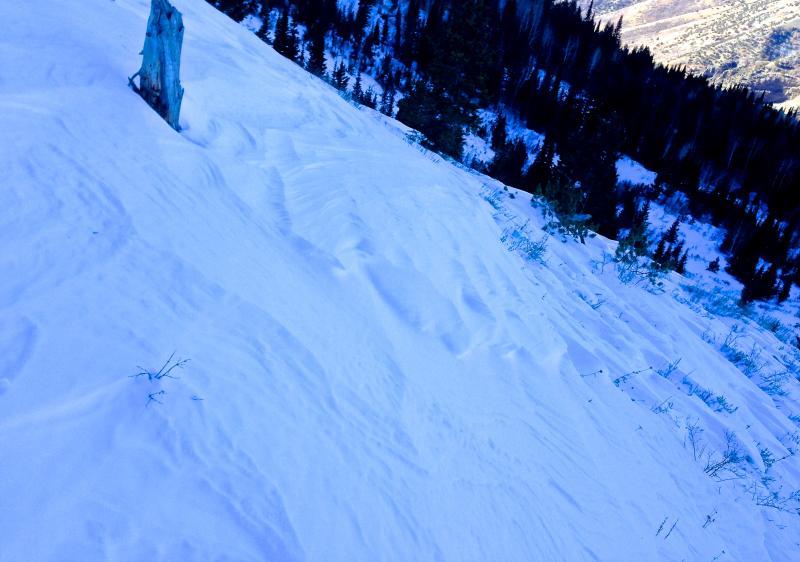
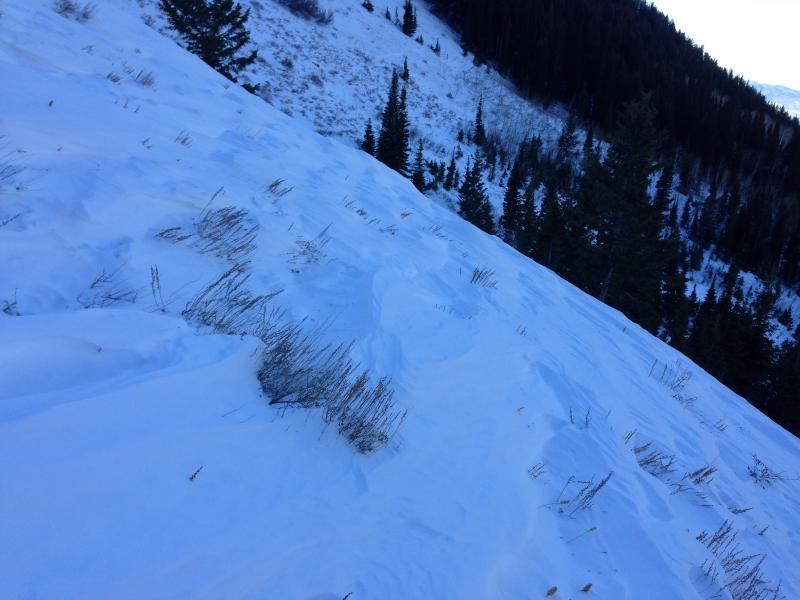
Here are a few views showing the sorry state of affairs, snow coverage wise up in Providence Canyon. Looking up at the horribly wind-jacked north facing Milleville Face..... Looking north, across the canyon at Providence and Logan Peak and the barren south facing terrain in the western Bear River Range...
Aspen glades are still a bit bush choked.
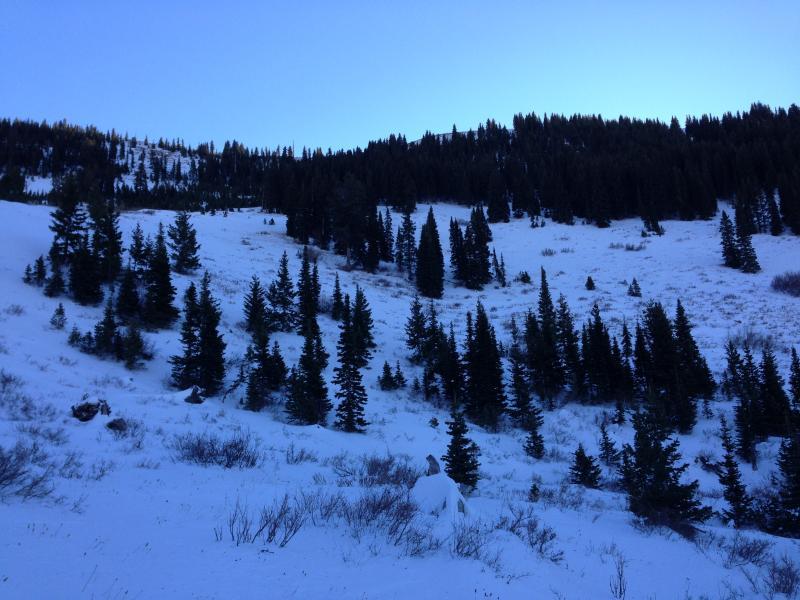

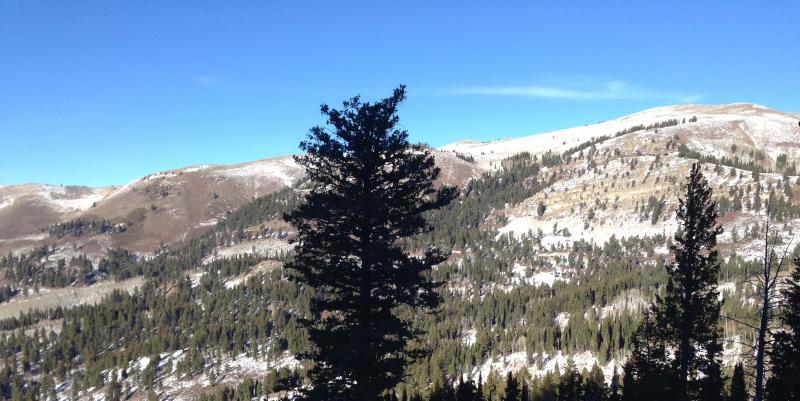
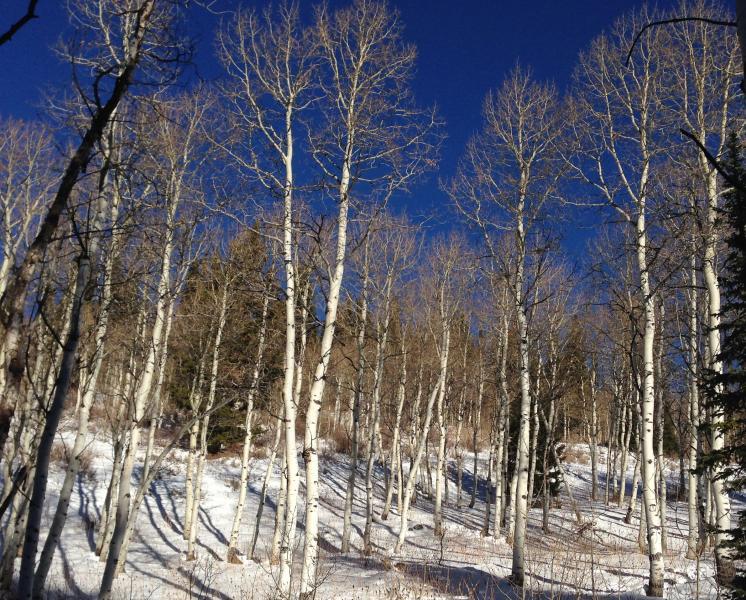
I triggered cracking in areas near the thinning edges of hard wind slabs and in wind crusts. In all cases, the cracks indicated a slab failure on the very weak sugary or faceted snow that the drifted snow was deposited on.....






